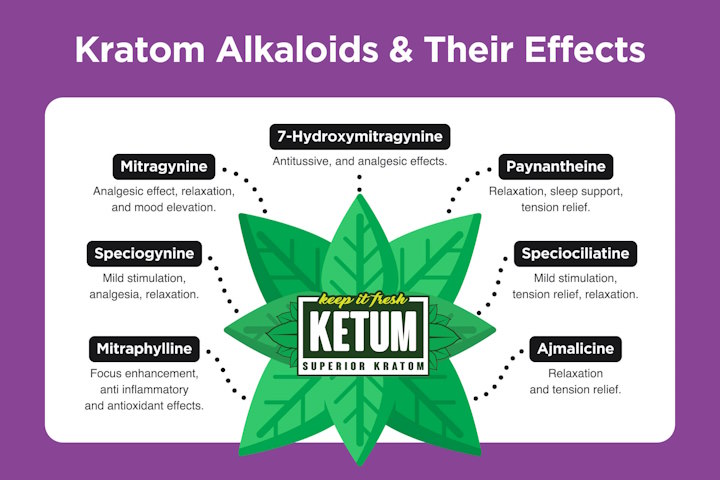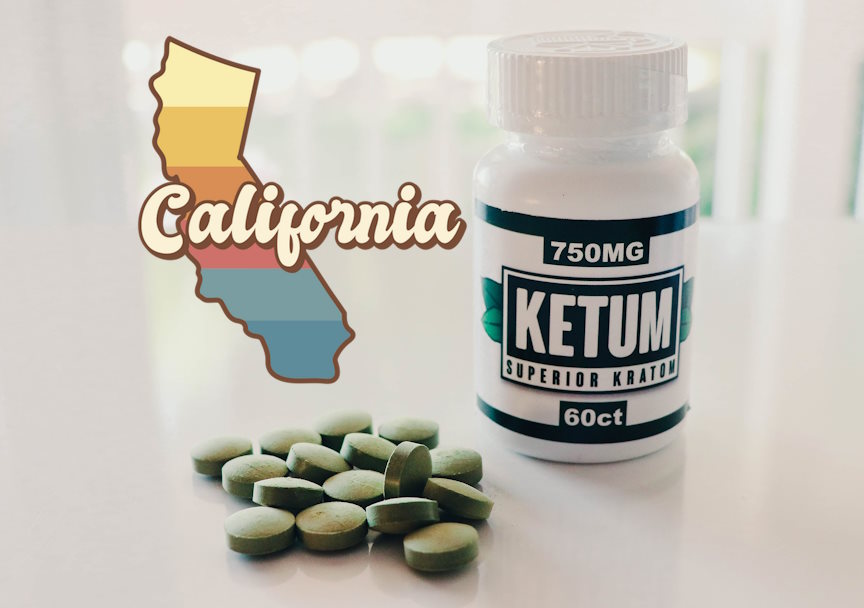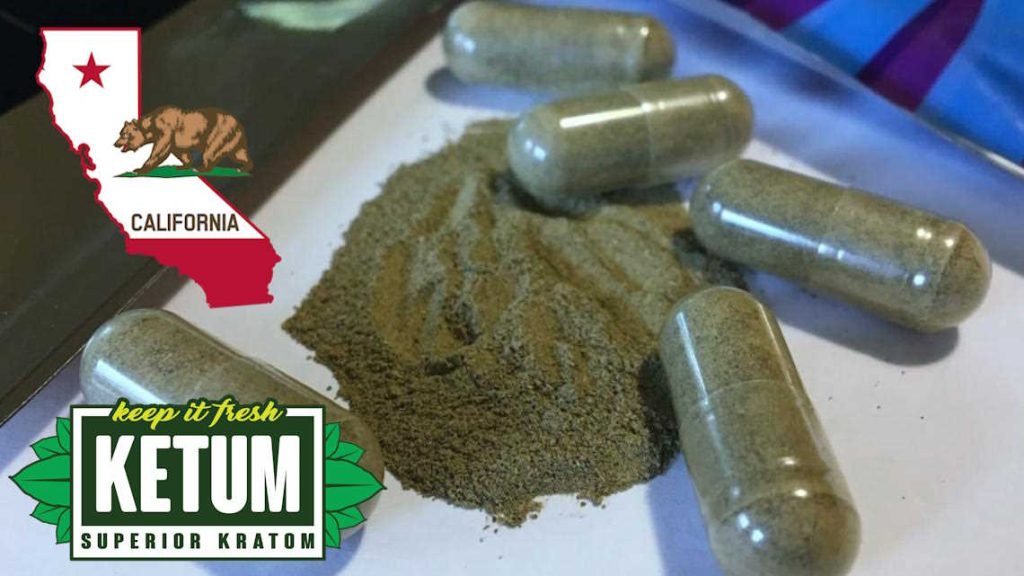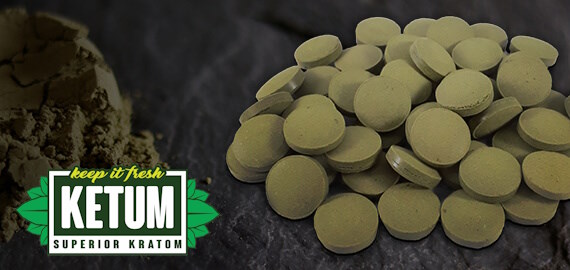
Kratom is a beneficial plant for millions of Americans, providing relief, focus, energy, and relaxation. So, how does it work? With a distinct combination of around 45-50 unique alkaloids, each with its own effects and properties.
Keep reading to learn about some of the most prevalent or beneficial alkaloids found in kratom including Mitragynine, 7-Hydroxymitragynine, Rhynchophylline, Speciociliatine, Paynantheine, and more.
What are Kratom Alkaloids?
To put it simply, kratom alkaloids are the active ingredients that produce the medicinal effects of the plant. These are the substances that are responsible for the effects of kratom, everything from energy and focus to relaxation and tranquility.
The two most common and well-known alkaloids in kratom are Mitragynine and 7-Hydroxymitragynine, which is why many kratom sellers will perform lab tests to determine the potency of these alkaloids, but the full range of kratom effects requires the other alkaloids as well.
That’s why only full-spectrum extracts like Ketum Extreme Extract Tinctures produce a wide range of effects, whereas extracting only Mitrgynine and 7-Hydroxymitragynine will provide limited results.
8 Kratom Alkaloids And Their Effects
While there are as many as 50+ alkaloids in kratom, we’re going to look at 8 that produce desirable effects, what they do, and how they work. There’s no better place to start than with Mitrgynine, the most abundant alkaloids in kratom.
1. Mitragynine
Mitragynine is an indole alkaloid that interacts with opioid receptors in the brain as well as noradrenergic and serotonergic pathways. That’s why it produces such unique effects compared to almost any other substance on Earth including:
- Sedation and relaxation
- Stimulation and energy
- Mood lift or euphoria
- Natural relief and bodily comfort
Additionally, Mitrgyninie makes up as high as 66% of the total alkaloid content, especially with potent green strains like Green Dragon Kratom. Plus, it serves as a precursor to the next alkaloid on our list: 7-Hydroxymitragynine.
2. 7-Hydroxymitragynine
While 7-OH is considered the second most important alkaloid for producing kratom’s effects, it only makes up around .1-2% of the total alkaloid content. Depending on the aging and drying process of kratom, Mitrgynine can turn into 7-Hydroxymitrgynine, which is why red strains like the ever-popular Red Bali Kratom are more sedating than fresher white and green strains.
The effects of 7-OH are more sedating, providing analgesic effects as well as both physical and mental tranquility. It can also produce a mood lift, promote healthy sleep, and help to reduce stress.
3. Rhynchophylline
The next kratom alkaloid we’re going to look at is Rhynchophylline. While this little-known compound is similar in structure to Mitrgynine, it offers slightly different results. One of the main differences is that it can help relax the muscles, making high Rhynchophylline strains perfect for those recovering after workouts. Plus, some research shows that it can promote healthy blood pressure regulation.
Finally, it might also add to the mood-enhancing outcomes of Mitragynine and 7-OH, making it an important factor concerning kratom’s wonderful effects.
4. Speciociliatine
Speciociliatine is fairly abundant in kratom, responsible for as much as 3% of kratom’s total alkaloidal content. It’s structurally similar to Mitrgynine, which is why it produces similar effects. Together, the effects synergize, producing more comfortable effects. Some believe that Speciociliatine is also responsible for the low number of side effects people experience with kratom like jitters or discomfort.
5. Pseudoindoxyl
While recently discovered, scientists are very interested in Pseudoindoxyl for good reason. It tends to have a more prominent role in discomfort relief, stress reduction, and relaxation. This is perfect for counteracting the over-energetic impact of some of the other compounds. Pseudoindoxyl tends to be found most abundantly in Red and Yellow Kratom Strains.
6. Paynatheine
Paynantheine is a byproduct of Mitragynine and is formed in the metabolic process. While it acts in a similar way as 7-Hydroxymitragynine, it also is quite a bit more abundant. Because of that, it could help promote healthy sleep, relieve discomfort, and subdue stress levels.
7. Speciogynine
Speciogynine is very prevalent in kratom, making up as much as 8% of the kratom plant. It provides mild stimulation and energy, which makes white kratom strains like Super White Kratom so great for productivity and focus. However, in larger doses, Speciogynine may also contribute to relaxing effects.
8. Corynanthine
Corynanthine is another alkaloid found most predominantly in red strains, especially fermented reds like Bentuagie Red Kratom. By attaching to the alpha adrenergic receptors, Corynanthine prevents the body from using adrenaline, which means it may calm stress, racing thoughts, and nervousness. That’s why fermented reds are so popular for people who are looking for tranquility, relaxation, and sedation.
Other Kratom Alkaloids
While most of these additional alkaloids are fairly insignificant on their own, making up 1% or less of kratom, combined with the more prevalent alkaloids they contribute to the positive effects of the powerful plant.
- Ajmalicine
- Mitraphylline
- Corynoxine
- Tetrahydroalstonine
- Akuammigine
- Isomitrafolin
- Ajmalicine
- Ciliaphylline speciosa
- Isocorynantheidine
- Mitrafoline
- Isopteropodine
- Mitraversine
- 9-hydroxycorynantheidine
- Mitragynine oxindoles A and B
- Stipulatine
Conclusion
As you can see, kratom is a complex plant, which is why the reason people use kratom can range significantly from needing better sleep to waking up, relaxing or boosting energy. That being said, you don’t need to overcomplicate things for your own use. Instead, just use this rhyme:
- Take White to Feel Bright
- Take Red to Go to Bed
- Take Yellow to Feel Mellow
- Take Green for Inbetween
While that’s oversimplifying things, it can help you get the kratom that mostly aligns with your desired effects whether that’s a relaxing red, stimulating white, or something in between. Tap here to find the perfect kratom strain today!




